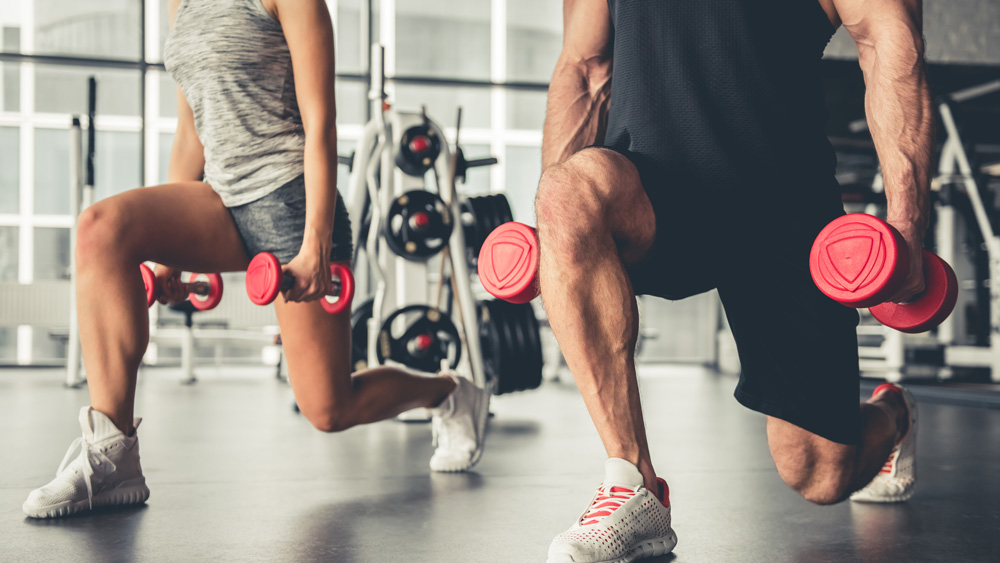
Learn everything there is to know about lunges!
Lunge, in all its variations, is a lower-body resistance exercise that activates several muscle groups at once. If you never skip a leg day (and we suggest you don’t), you must have used lunges at least once in your workout.
Would you like to know more about one of the most used lower-body exercises? Keep reading to find out what muscles lunges work, what are the benefits of lunges, and how to add weight to your lunges.
What muscles do lunges and side lunges work?
Lunges are a useful addition to your routine. Especially side lunges, as they involve a side-to-side movement that is not present in classic lunges or squats. Therefore, side lunges are great to complement squats and regular lunges on your leg day.
Lunges and side lunges work a couple of muscle groups:Glutes - they work gluteus maximus, medius, and minimus. In your leading leg, glutes do the majority of work, so make sure to do the same number of repetitions on each side.
Hamstrings - biceps femoris, semimembranosus, and semitendinosus make up your hamstrings. They help you control descent into the lunge position and return into the standing position.
Quadriceps - the muscle in your thigh that is responsible for aiding the lowering into the lunge and extending the knee when returning to the standing position.
Abductors - on your leading leg, abductors work to control your knee and hip movement, while those on your trailing leg get a good stretch.
Side lunges with weights
Side lunges are a great exercise if you are looking to add weight in your routine. By adding weight to side lunges, they become addition or replacement for squats in your routine.
Side lunges with weight are more demanding, more intense, and harder to perform. This has several great effects:
1. Bigger muscle gain
2. Bigger calorie expenditure
3. Developing bigger muscle strength
4. Better joint stabilization
Benefits of side lunges
Lunges are functional movement. They involve the movement of the hip joint and muscles in a different plane of motion than squats do. This means that practicing variations of lunges will help you work muscles in ways that benefit your everyday movements.
As lunges are a unilateral movement, they are more demanding for your balance. By doing the lunges you increase your joint stability as you recruit smaller muscles around the hip joint that are responsible for keeping your joint stable. Also, if you enjoy sports that require lunging movements, such as tennis or basketball, practicing lunges can benefit your performance.
Lunges or squats?
Which exercise you will choose depends on the muscles you want to put to work. Both exercises do their job and should be a part of your routine.